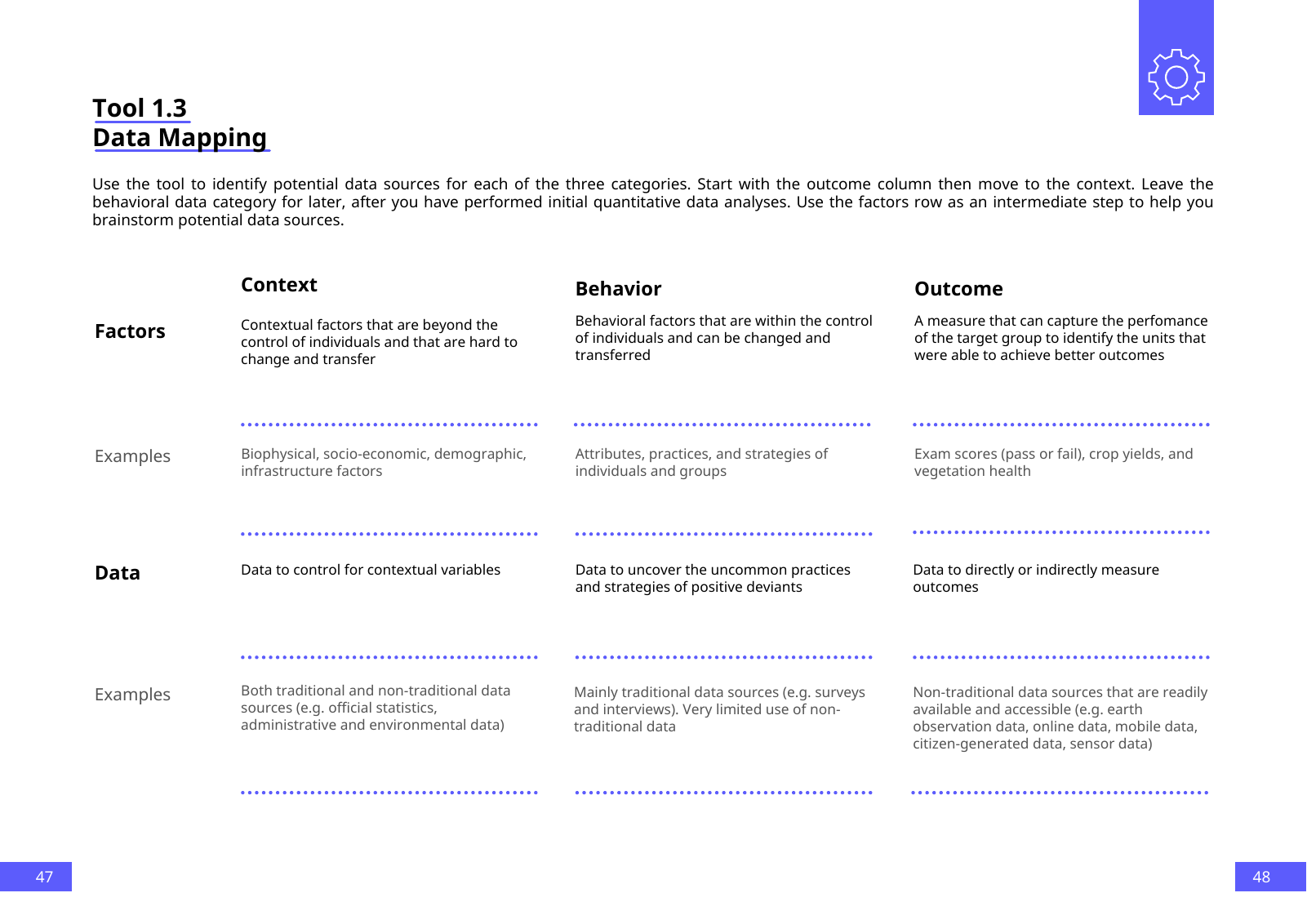Tool 1 3 Data Mapping Use the tool to identify potential data sources for each of the three categories Start with the outcome column then move to the context Leave the behavioral data category for later after you have performed initial quantitative data analyses Use the factors row as an intermediate step to help you brainstorm potential data sources Context Behavior Outcome Contextual factors that are beyond the control of individuals and that are hard to change and transfer Behavioral factors that are within the control of individuals and can be changed and transferred A measure that can capture the perfomance of the target group to identify the units that were able to achieve better outcomes Biophysical socio economic demographic infrastructure factors Attributes practices and strategies of individuals and groups Exam scores pass or fail crop yields and vegetation health Factors Examples Data to control for contextual variables Data to uncover the uncommon practices and strategies of positive deviants Non traditional data sources that are readily available and accessible e g earth observation data online data mobile data citizen generated data sensor data Data Data to directly or indirectly measure outcomes Mainly traditional data sources e g surveys and interviews Very limited use of non traditional data Both traditional and non traditional data sources e g official statistics administrative and environmental data Examples 47 48

Hinweis: Dies ist eine maschinenlesbare No-Flash Ansicht.
Klicken Sie hier um zur Online-Version zu gelangen.
Klicken Sie hier um zur Online-Version zu gelangen.